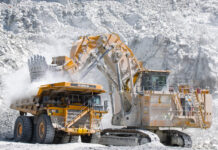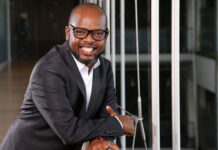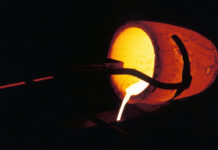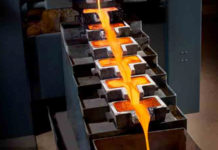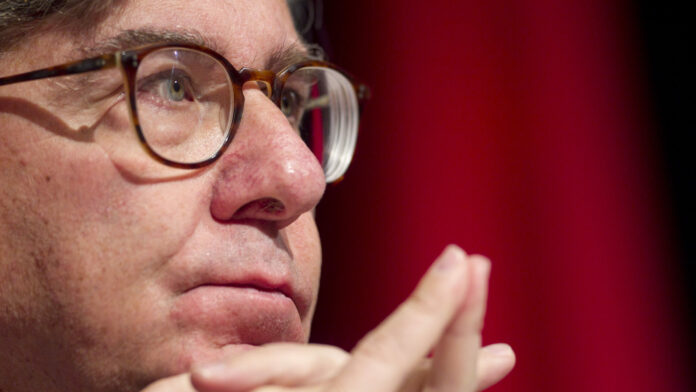
A
asked at the recent London Indaba conference to explain why he opted to become a non-executive after 12 years at Barrick Gold, chairman John Thornton replied: “What does executive mean when Mark Bristow is the CEO?”
That’s some compliment from Thornton, a former co-president of Goldman Sachs and director of the iconic $50bn automaker Ford Motor Co. But it’s also no surprise. Thornton is 70, and holds four other directorships, including one on Chinese technology company Lenovo Group’s board.
More importantly, Barrick has been transformed into a typical Bristow company which is to say, very like Randgold Resources the firm Bristow founded in 1994, and the only other public business he has run.
Gold production last year hit its lowest level since 2000 as its focus falls on margin over ounces. And despite kicking the tyres at a number of gold and copper companies, the company has steadfastly kept away from mergers and acquisitions. Other Bristow features are the dismantling of the head office, and – as a consequence of the paucity in dealmaking –, an increase in brownfields exploration.
Finally, as with Randgold Resources, Bristow has a near-ubiquity in the organisation. “He [Bristow] goes from mine to mine to mine all year long. That’s extremely valuable,” said Thornton who likened Bristow’s work ethic to that of leaders he’d read about, such as Margaret Thatcher, for former prime minister who got by on four hours sleep nightly.
Bristow spends a major part of each year visiting Barrick’s sites. A typical schedule starts in central and West Africa before heading to Saudi Arabia, Pakistan, then on to Papua New Guinea, eventually landing in the Dominican Republic ahead of the America’s leg of his quarterly tour. Mine management at each site know better than to turn up less than 100% prepared. “Bristow knows more than they do,” said Thornton.
It was this obsession with operational rigour that earned Bristow accolades at Randgold, eventually lining it up as the best merger partner with Barrick. Prior to the merger, Thornton says he ran Barrick in a partnership he knew at Goldman Sachs. “The top 10 to 15 people would meet once a week; we would discuss every important topic and reach a consensus, make a decision, and then go,” he said. It was a way “to learn the business”, but Thornton said it was also a holding pattern. “I knew that sooner or later I had to merge Barrick with a company with the best CEO in the industry,” he said.
Six years later, with Bristow at 65, there’s been some talk of succession, but nothing definite about his passing on the baton. Speaking from Kinshasa where he’s on a site visit to Barrick’s giant Kabila gold mine, (of course), Bristow sounds far from contemplating the prospect of weekly rounds of golf, or taking up a hobby. Instead, he launches into a characteristic broadside of gold industry problems. Expensive M&A is his absolute bugbear.
“You’ve got a whole pile of M&A,” he says. “This rising gold price make some transactions look okay – some of them – but betting on bigger for its own sake is not a good strategy, especially in mining.”
Top of the list is BHP’s takeover proposal for Anglo American which he says is “a headscratcher”. Why would a miner prized for bulk mining in “safe jurisdictions” consider bidding for a firm with “a different risk portfolio … without knowing how”, asks Bristow. Well, copper is the answer – a mineral Barrick itself has been long connected.
This article appeared in The Mining Yearbook 2024. Click here for the microsite and downloadable PDF.
In fact, Barrick was linked with a rival offer for Anglo – speculation that Bristow instantly quashed. As a geologist, Bristow is predisposed to building mines rather than buying them. Lumwana, a copper mine in Zambia for which Barrick infamously broke the bank prior to Bristow’s time, in 2011, is being scaled up into a tier one asset after years of middling to poor performance. Another copper yielding asset, the $7bn Reko Diq project in western Pakistan, is being developed after 30 years of delays, most of them as a Barrick prospect.
Bristow admitted to having talks in 2020 with US company Freeport McMoRan about a deal for Grasberg, a giant Indonesian copper mine. But the transaction didn’t get beyond the concept stage. Whisper it, but that may have been a mistake.
We have insisted on getting into the weeds and that has been a mistake – John Thornton, Barrick Gold
Freeport is capitalised at $71bn today compared to $10bn when Bristow was eyeing it. Interestingly, Thornton seems to allude to a number of missed opportunities in M&A. Barrick had been slow buy companies,” he said. “We have insisted on getting into the weeds and that has been a mistake.”
Bristow’s view however is that the market will have no choice but to recognise the value of its resource development, over time. Randgold saw its price to NAV double overnight (to 2x) after developing Tongon and Kibali – now the flagship assets in Barrick’s African portfolio. Reko Diq and Lumwana will fulfil a similar function, says Bristow.
Burnt fingers
Research by ratings agency S&P found that of 47 deals fitting its criteria last year, 30 were in gold. Of a total deal value of $26.4bn, $22bn were in gold, although the data has a caveat. Newmont’s takeover of Australian producer Newcrest was, at $17bn, the largest ever in the world’s gold industry.
Some 223 million ounces of gold in reserves and resources exchanged hands last year at a time when the gold price soared to record highs, and appears to have consolidated above $2,000 per ounce. At face value, the market appears to be incentivising supply (though commentators argue against this).
It was in this context that Gold Fields sought the takeover of Yamana Gold, a Canadian firm, that would have propelled production to at least 3.2 million oz/year from peak output of 2.7m/oz in about 2027. Unfortunately for Gold Fields’s then CEO Chris Griffith, the South Africans were outbid. It’s questionable whether Gold Fields’s shareholders would have supported the deal in any case.
The way we see the world, Yamana would have been a good addition, but it would have been really very expensive – Mike Fraser, Gold Fields
Today, Gold Fields is in a battle to reach this year’s adjusted gold production guidance of 2.2 and 2.3 million oz after a series of damaging ramp-up delays at its Salares Norte mine in Peru. But CEO Mike Fraser rejects the suggestion the company missed an opportunity with Yamana. He seems to take a similar position to Bristow on M&A.
“The way we see the world, Yamana would have been a good addition, but it would have been really very expensive,” says Fraser in an interview. “For many of our shareholders, the horizon in which see a return would have been quite distant into the future.” Fraser thinks investors would be served better by profit-making even if it’s from a smaller base.
While so-called transformatory transactions are not “off the table”, Fraser thinks “smaller, more digestible deals” are the likelier for Gold Fields. At the same time, he acknowledges, Gold Fields has to maintain a certain size. “There is a relevancy number of two to three million ounces,” says Fraser. “If in that number you are number four, that’s a good place to be in. Once you drop to below two million ounces you become less relevant.”
“Certainly in gold, you don’t have to be biggest but the best,” said Thornton. Given that Barrick’s production is exceeded by Newmont, he might well draw that conclusion. Despite this neither size nor margin currently seems to be enticing investors into North American gold shares. Gold Fields has been marked down for its operational problems; in the case of Newmont and Barrick investors are suspicious mining inflation has not been sufficiently tamed. “Valuations at current spot prices would indicate a level of market scepticism over the ability of companies to deliver expected margins at current gold prices,” says BMO Capital Markets.
Bristow reckons it will take Barrick two years to clear away “big non-operating costs … because my absolute obessions has been to reduce liabilities. But then our costs come down rapidly,” he says. He acknowledges Barrick has been hit harder than many of its rivals because it has a greater exposure to US dollar costs whereas others benefit from Canadian and Australian currency weakness against the US dollar. “We are growing our margins not because of that though, but because of the increase in the gold price, and the copper price,” says Bristow.
Belief in higher gold prices?
Bristow, and Fraser, have the market firmly at their backs. According to Jim Rutherford, a non executive chair of Centamin, an Egyptian gold miner, the market scarcely believes a $2000 plus per oz gold price is a new normal. But it is, he says. “It has taken gold two decades to get through $2,000/oz.” Bristow thinks elevated gold prices are a symptom of the world’s political and economic affairs. “It is in a bad way, the world,” he says.
There’s also a theory that Western investors are sticking by traditional economic rules, only buying gold shares when interest rates fall whereas central banks in emerging markets, such as China are buying the metal in order to de-dollarise the economy, possibly ahead of more geopolitical uncertainty.
China and India have been the bedrock of gold consumption for years, accounting for about 50% of all physical gold purchases, but now economies such as these they are beginning to dominate price formation, says John Reade, chief market strategist at the World Gold Council.
They don’t want to put themselves in a position where they’re more vulnerable than they need to be if they offend the West, particularly with a potential change of government in the US with, maybe, a more isolationist expression to follow – John Reade, World Gold Council
China’s central bank is also the largest buyer of official sector purchasing which are now double that of 2022. “All indications are that they’re going to continue at very strong levels,” says Reade. De-dollarisation is a factor in this; central banks taking long-term policy decisions are tending towards a multi-currency regime rather than hegemonic US dollar driven world economy.
Central banks in emerging economies are not necessarily enemies of the West but they’re not automatic allies either. “They don’t want to put themselves in a position where they’re more vulnerable than they need to be if they offend the West, particularly with a potential change of government in the US with, maybe, a more isolationist expression to follow,” says Reade.
Says Bristow: “When you look at the world today, you have to look at the US. There are lots of ways you can describe it. I won’t say it because you’ll print it. Then you look at the right-wing rising in Europe. Then you’ve got Vladimir Putin, president of Russia embracing North Korea. The world is not in a good place.”




